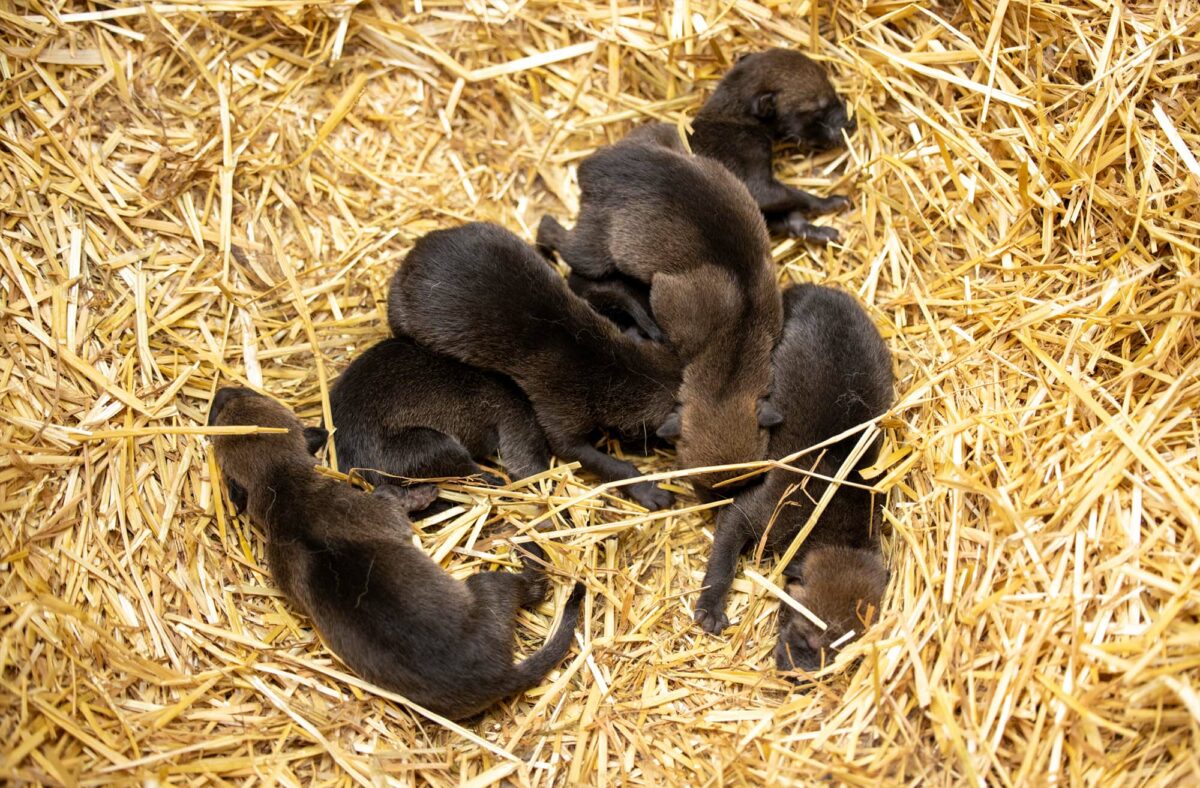Nine new puppies have entered the world, and they’re already supporting a good cause. On May 9, the North Carolina Zoo in Asheboro, North Carolina, announced the birth of two litters of red wolf pups. Their arrival is part of the American Red Wolf SAFE (Saving Animals From Extinction) program.
The red wolf is considered critically endangered by the International Union for Conservation of Nature (IUCN). According to the U.S. Fish and Wildlife Service (FWS), “about 15 to 17 red wolves roam their native habitats in eastern North Carolina as a nonessential experimental population, and approximately 235 red wolves are maintained in 49 Red Wolf SAFE (Saving Animals From Extinction) facilities throughout the United States.”
Watch the adorable pups experience their 24-hour checkup in the video below.
[mm-video type=video id=01h0gpxkevns2sp8fj9q playlist_id=none player_id=01g391txpn1ae492vp image=]
In a tweet announcing the births, the North Carolina Zoo explained that the two litters came from two different wolf pairs. Red wolves Marsh and Roan welcomed a litter of three pups, while Denali and May produced six pups. The video above shows Denali and May’s litter of six.
As the zoo explained via Twitter, “during their 24-hour checkup, the pups are visually checked to ensure they appear healthy and hydrated. They are checked for heart murmurs and a cleft palate to ensure they have the suckle reflex so they can nurse properly.” Veterinary staff will continue checking the litter every two weeks.
What happens to these pups when they grow to adulthood? Each puppy is a candidate for being released into the wild. As part of the American Red Wolf SAFE program, these pups can help boost the red wolf population.
As the FWS explains on its Red Wolf Recovery Program page, “Captive breeding saved the red wolf from extinction and is an essential component of red wolf recovery. Past releases of red wolves from the population under human care into the ENC RWP [Eastern North Carolina Red Wolf Population] helped the wild red wolf population reach a peak of 120 animals in 2012.”
